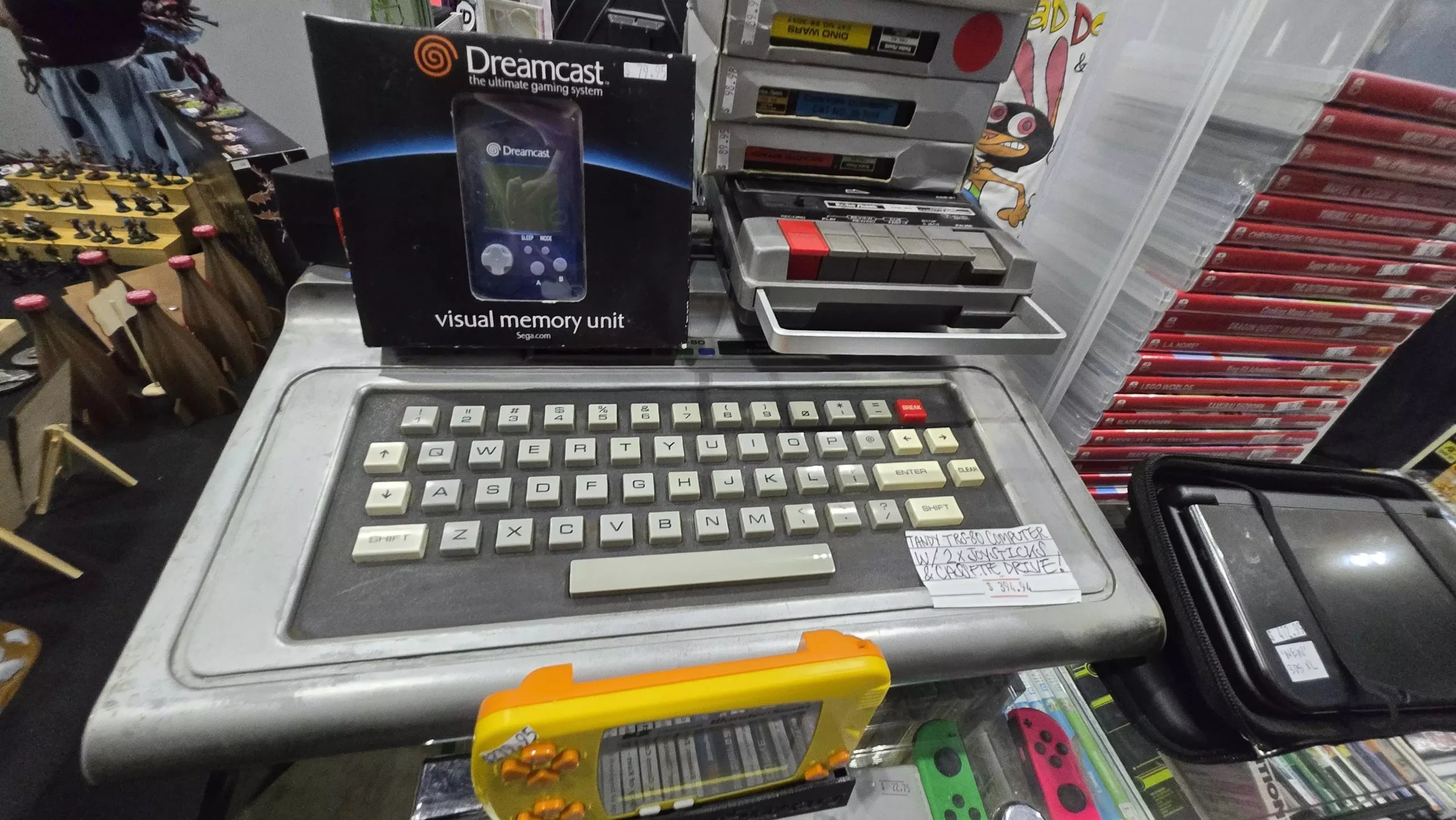In exploring contemporary collector events, there exists a fascinating dichotomy between what is present and what is conspicuously absent. Events like Collect Fest, held within the sprawling halls of the Melbourne Convention and Exhibition Centre, exemplify this phenomenon. The same space that hosts gaming conventions and geek gatherings is transformed into a marketplace of consumer temptations, overflowing with stalls showcasing a diverse array of nostalgic treasures. Yet, beneath this surface of abundance, a glaring void emerges—one that reveals a bias towards certain types of memorabilia, and a surprising neglect of others. The event reflects a broader cultural shift: a visceral obsession with console gaming paraphernalia, while PC hardware and software, the technological backbone of modern gaming, are conspicuously sidelined.
What stands out most starkly is the overwhelming presence of vintage consoles and modded handheld devices flaunting OLED screens and custom shells. These are the showstoppers, drawing in crowds and commanding high prices, often exceeding $200 for a single device. Collectors flock around these displays, eager to own a piece of portable nostalgia, and vendors report brisk sales of these items. However, when it comes to the core of PC gaming—the hardware, software, and archival collectibles—that world remains largely invisible at the event. This discrepancy underscores a cultural shift: the persistent allure of built-in, easily accessible, emotionally charged artifacts versus the complex, often esoteric realm of PC gaming minutiae.
The Disappearance of PC Hardware from the Collector’s Radar
One of the most startling revelations from this exploration is how little attention is paid to PC components and software. The lone PC relic, a Tandy TRS-80 in a glass showcase retailing for nearly $400 AUD, stands as a monument to the bygone era of early home computing—a relic more than a commodity for today’s collectors. Its lonely presence is indicative of a broader pattern: the high cost and limited demand for vintage PC hardware make it unappealing for vendors and collectors alike.
This trend is emblematic of a cultural preference that favors instant gratification and visual appeal. Modded handheld consoles, with their sleek OLED screens and customized shells, offer immediate sensory appeal and ego-boosting bragging rights, which translate directly into sales. Meanwhile, PC hardware, often bulky and less visually exciting, fails to ignite the same passion. The high prices of vintage PC components and the technical knowledge required to appreciate or restore such items further alienate this segment of collectors. As a result, these items are pushed aside—not necessarily because they lack historical importance or nostalgic value—but because their market appeal doesn’t match that of more fashionable, consumer-friendly relics.
The Shift in Collector Priorities: From Commodore to Consoles
This divergence in what is popular reflects a societal shift in nostalgia and consumption. Retro console enthusiasts are making loud demands—fueled by the user-friendly nature of these devices, their portability, and the aesthetic appeal of modded shells. These consoles tap into a collective memory of simpler times, often associated with childhood or early years of gaming. The presence of heavily modded Game Boy Advance models and Nintendo DS devices, flaunting OLED screens and custom designs, signifies more than just technology—they represent cultural symbols and identity markers.
Conversely, PC hardware and software are perceived as less approachable, more technical, and less visually distinctive. Their appeal is rooted in nostalgia for the early days of personal computing and gaming, but current collector markets do not reflect this sentimental value equally. Instead, the market is driven by superficial modifications and the visual impact of portable gaming devices, which are easier for a broader audience to relate to and purchase.
The Implications for the Future of Retro Gaming and Collecting
This skewed focus toward console collectibles raises critical questions about the direction of gaming history preservation. As the market converges on high-margin, visually appealing items, the narrative of PC gaming’s evolution risks being marginalized. PC gaming has been instrumental in shaping the industry—pioneering genres, hardware innovations, and online ecosystems. Yet, its artifacts are overlooked, understocked, and undervalued in current collector circles.
If this trend persists, there’s a real danger of losing the tangible history of PC gaming. The physical media, hardware, and software that once powered some of the most influential titles are becoming relics, harder to find, and less appreciated. Instead, collector markets may end up celebrating superficial aesthetics over technological innovation, fusing a kind of nostalgic aestheticism with the history of digital entertainment, while the foundations built by PC gamers fade into obscurity.
Questioning the Future of Gaming Heritage
This discrepancy calls for a reevaluation of what it means to preserve and celebrate gaming history. While the allure of modded vintage handhelds and nostalgic consoles is undeniable, the neglect of PC hardware reveals an incomplete picture. The story of gaming is not solely written through portables and cartridges but also through the evolution of computer technology that enabled the emergence of online multiplayer, vast digital ecosystems, and indie creativity.
In the end, the collector’s focus may reveal more about current societal values than about gaming itself. A fixation on visually appealing, easily commodified artifacts might overshadow the rich, complex history of the PC gaming realm—a history built on innovation, community, and technical mastery. To truly honor the breadth of gaming culture, future collector efforts should strive to balance aesthetic appeal with historical significance, ensuring that the roots of digital play are not erased amidst the glittering glow of modded OLED screens.


Leave a Reply